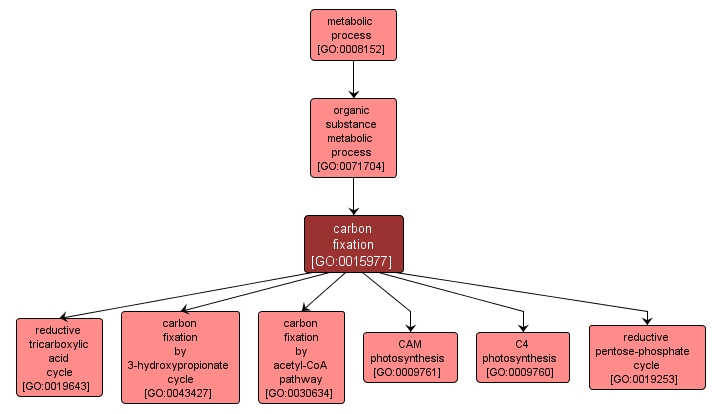GO TERM SUMMARY
|
| Name: |
carbon fixation |
| Acc: |
GO:0015977 |
| Aspect: |
Biological Process |
| Desc: |
A metabolic process in which carbon (usually derived from carbon dioxide) is incorporated into organic compounds (usually carbohydrates). |
Synonyms:
- autotrophic CO2 fixation pathway
- autotrophic CO2 fixation
- autotrophy
|
|

|
INTERACTIVE GO GRAPH
|














